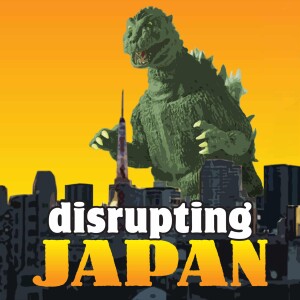
Disrupting Japan: Startups and Venture Capital in Japan
Business:Entrepreneurship

How Virtual Reality is Changing Surgery in Japan – Holoeyes
 2017-04-17
2017-04-17
Download
Right click and do "save link as"
Many VR startups are a solution is search of a problem, but Holoeyes is already in use at hospitals around Japan. Although the medical industry is one the most highly regulated, conservative and hard to disrupt, Holoeyes has made inroads by solving a very specific problem for surgeons.
Today we sit down with Naoji Taniguchi, CEO of Holoeyes, and talk about the steps his startup had to take to sell into the medical market in Japan and to win over traditionally conservative doctors. Holoeyes builds up virtual reality models of organs from CT scans, and lets doctors analyze and discuss these matters much more directly and clearly than they could before.
It’s a great interview and I think you’ll enjoy it.
Show Notes for Startups
How VR can actually save hospitals money and improve outcomes
Why the world needs a GitHub of surgery
What Japanese startups get out of accelerator programs
Why the real value in surgical VR is not what you think
How Holoeyes achieves medical quality in low-spec devices
How Holoeyes convinced conservative doctors and hospitals to try a new technology
Advice for startups trying to sell to doctors
Why more and more medical professionals will be getting involved in startups in Japan
Links from the Founder
Everything you ever wanted to know about Holoeyes
Follow Naoji on Medium
Follow him on twitter @tani_yang
Friend Naoji on Facebook
See Holoeyes in action
https://www.youtube.com/watch?v=nrYlsSldXSM
https://www.youtube.com/watch?v=Fu9RU03PPho
https://www.youtube.com/watch?v=ANN64JeUjog&t=2s
[shareaholic app="share_buttons" id="7994466"] Leave a comment
Transcript from Japan
Disrupting Japan, episode 82.
Welcome to Disrupting Japan, straight talk from Japan’s most successful entrepreneurs. I’m Tim Romero, and thanks for joining me.
The medical industry is one of the world’s most highly regulated and hard to disrupt. And for the most part, that’s a good thing. But there are a number of innovative start-ups that have ways of improving things. Not disruptive change, mind you, but simple, more cautious, incremental change that will make life better for everyone. Holoeyes is one of those questions. And today we sit down with Naoji Taniguchi and we talk about how their VR solution is winning over doctors all over Japan, and changing the way surgery is done.
Holoeyes builds up a virtual reality model of organs from CT scans, and let’s doctors analyze and discuss these matters much more directly and efficiently than they could before. We’ll get into the details during the interview. But one of the things that impressed me the most about Holoeyes, is that is is already in use today. So much VR tech and so many VR companies have an amazing wow factor, but only the promise of future applications.
But you know, Naoji tells that story much better than I can. So let’s hear from our sponsor and get right to the interview.
[pro_ad_display_adzone id="1411" info_text="Sponsored by" font_color="grey" ]
[Interview]
Tim: So I’m sitting here with Naoji Taniguchi of Holoeyes.
Naoji: Yeah.
Tim: This is an application that uses AR and VR for medical training, and thanks for sitting down with me.
Naoji: Okay.
Tim: Can you tell me a bit more about the application and how it’s used?
Naoji: Holoeyes make customized model for each patient. For VR, our mixed reality, our product helps communication between doctor, surgery team members, or training senior doctors and new doctors.
Tim: So let’s just walk through from start to finish how it’s used. So how do you build up this VR model?
Naoji: Partially use Diacom Viewer. Diacom Viewer is viewer of CT scan image. Now we are trying to use deep learning to automate, create, make part of a model from CT scan image.
Tim: Okay, so it’s laterally taking a CT scan and building up the VR image kind of slice by slice?
Naoji: Yes, yes.
Tim: Alright,
view more
More Episodes
Disrupting Japan Trailer
 2018-10-08
2018-10-08
 2018-10-08
2018-10-08
012345678910111213141516171819
Create your
podcast in
minutes
- Full-featured podcast site
- Unlimited storage and bandwidth
- Comprehensive podcast stats
- Distribute to Apple Podcasts, Spotify, and more
- Make money with your podcast
It is Free
- Privacy Policy
- Cookie Policy
- Terms of Use
- Consent Preferences
- Copyright © 2015-2024 Podbean.com




